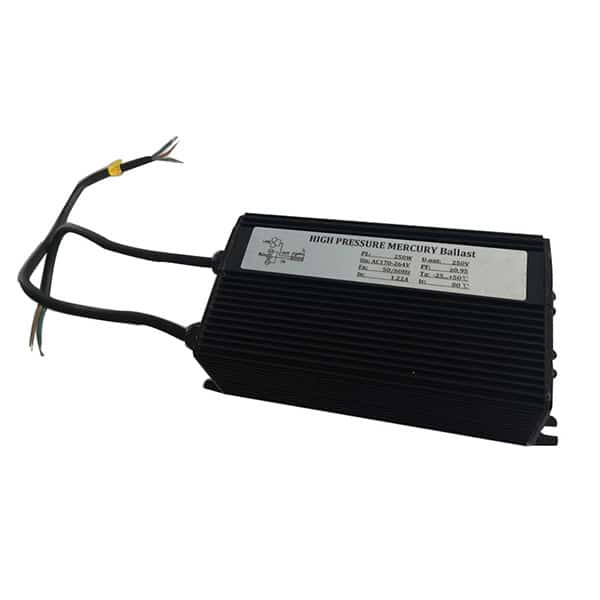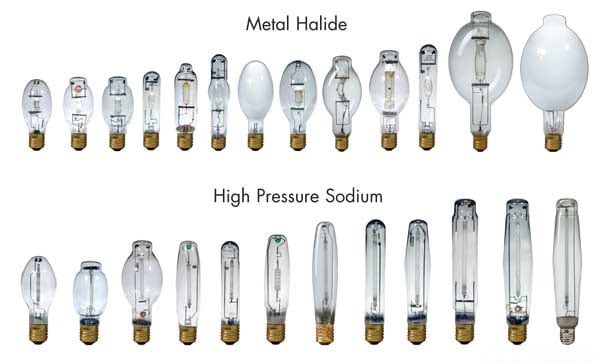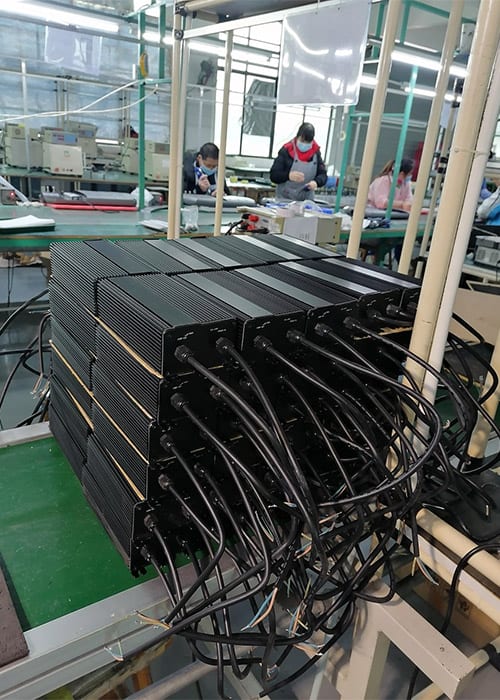Old school magnetic ballasts are big, inefficient and get hot. Luckily, electronic digital ballasts are a cool, efficient alternative for high-intensity discharge (HID) lighting systems. They save more energy, make your lamps last longer and have extra features like dimming and multi-wattage capability.
You’ve got electronic digital ballasts that are super efficient, save more energy, make your lamps last longer, and have cool features like dimming and multi-wattage capability.
Now, let’s look at how they compare to the old ballasts and why they’re becoming more popular.
Electronic digital ballasts are advanced devices used to regulate the electrical current in HID lighting systems, such as those used for metal halide and high-pressure sodium lamps. Unlike traditional magnetic ballasts, which rely on heavy coils and capacitors, digital ballasts use solid-state circuitry. This technology makes them more energy-efficient and compact, while also allowing them to operate at higher frequencies, typically around 20,000 Hz. By delivering electricity more consistently, digital ballasts ensure smoother, flicker-free light output and better overall performance.
In addition to regulating the electrical current more effectively, digital ballasts are known for their versatility. Many models offer multi-wattage compatibility, meaning they can power different types of lamps, such as metal halide and high-pressure sodium lamps, at various wattages. This flexibility is especially valuable for users who need different lighting intensities for specific applications, such as indoor gardening or commercial lighting setups. The ability to handle multiple wattages in one device eliminates the need for multiple ballasts, making digital ballasts a convenient choice.
The primary advantage of electronic digital ballasts is their energy efficiency. They consume far less electricity compared to magnetic ballasts, while providing the same, if not better, light output. This reduction in energy consumption translates into lower utility bills, making digital ballasts a cost-effective option over time. Additionally, digital ballasts generate much less heat than their magnetic counterparts. This not only prevents overheating issues but also extends the lifespan of both the ballast and the lamp it powers, reducing the need for frequent replacements and lowering maintenance costs.
Another key feature of electronic digital ballasts is their ability to dim the lights. Many digital ballasts come with built-in dimming controls, allowing you to adjust the light intensity based on your needs. This feature is especially useful for grow light setups where different stages of plant growth require varying light levels. Dimming the lights also helps conserve energy during periods when full brightness is not necessary. In addition, these ballasts incorporate soft-start technology, which prevents electrical surges when the lights are turned on. By gradually increasing the power, soft-start technology protects the lamps from damage and prolongs their operational life.
When comparing digital ballasts to traditional magnetic ballasts, the differences are substantial. Magnetic ballasts are often large and heavy due to the use of coils and capacitors, making them bulkier and harder to install. Furthermore, they are less energy-efficient and tend to generate significant amounts of heat, which can shorten the lifespan of both the ballast and the lamp. Magnetic ballasts are also more prone to buzzing noises and flickering lights, which can be disruptive in environments where stable lighting is essential.
In contrast, electronic digital ballasts are compact, lightweight, and designed to operate more quietly. They run at a much higher frequency, providing a smoother, more stable current to the lamp, which eliminates flickering and buzzing. Moreover, digital ballasts have lower harmonic distortion, meaning they produce less electrical interference, which is better for the environment. These improvements make them ideal for a wide range of applications, from commercial buildings to indoor grow rooms.
Another standout feature of digital ballasts is their ability to automatically detect the type of HID lamp being used. Whether you’re using a metal halide or high-pressure sodium lamp, the ballast can automatically adjust to provide the correct amount of power, ensuring optimal performance. Additionally, many digital ballasts are equipped with safety features like short-circuit protection, overheating prevention, and overvoltage safeguards. These built-in protections not only reduce the risk of accidents, such as electrical fires, but also enhance the overall durability and reliability of the system.
Electronic digital ballasts are an excellent choice for anyone looking to improve the energy efficiency of their lighting setup. They are particularly useful for individuals and businesses involved in agriculture, as these ballasts allow precise control over the intensity and duration of light exposure, which is critical for healthy plant growth. In greenhouses or indoor gardens, where lighting can account for a significant portion of energy costs, switching to digital ballasts can lead to substantial savings.
For those who are conscious of long-term costs, electronic digital ballasts provide significant advantages. Not only do they reduce energy consumption, but their longer lifespan also means fewer replacements are necessary. This makes them a cost-effective solution for large-scale operations, such as warehouses, industrial facilities, or retail environments where lighting is used extensively throughout the day.
Despite their numerous benefits, electronic digital ballasts are not without drawbacks. One concern is the higher initial cost compared to magnetic ballasts. However, this upfront investment is typically offset by the energy savings and reduced maintenance over time, making digital ballasts more cost-effective in the long run. Another potential issue is electromagnetic interference (EMI). In some cases, digital ballasts can cause interference with nearby electronic devices like radios or Wi-Fi signals. That said, most modern digital ballasts are designed to minimize this interference, and EMI is rarely a problem for most users.
Electronic digital ballasts are a better alternative to the old magnetic ballasts in many ways. They save more energy, make your lights work better, and have cool features like dimming and automatic detection. You can use them in all kinds of places to save money on your electric bill or to have better lighting in your indoor garden. They last a long time and have extra safety features built in to give you peace of mind.





